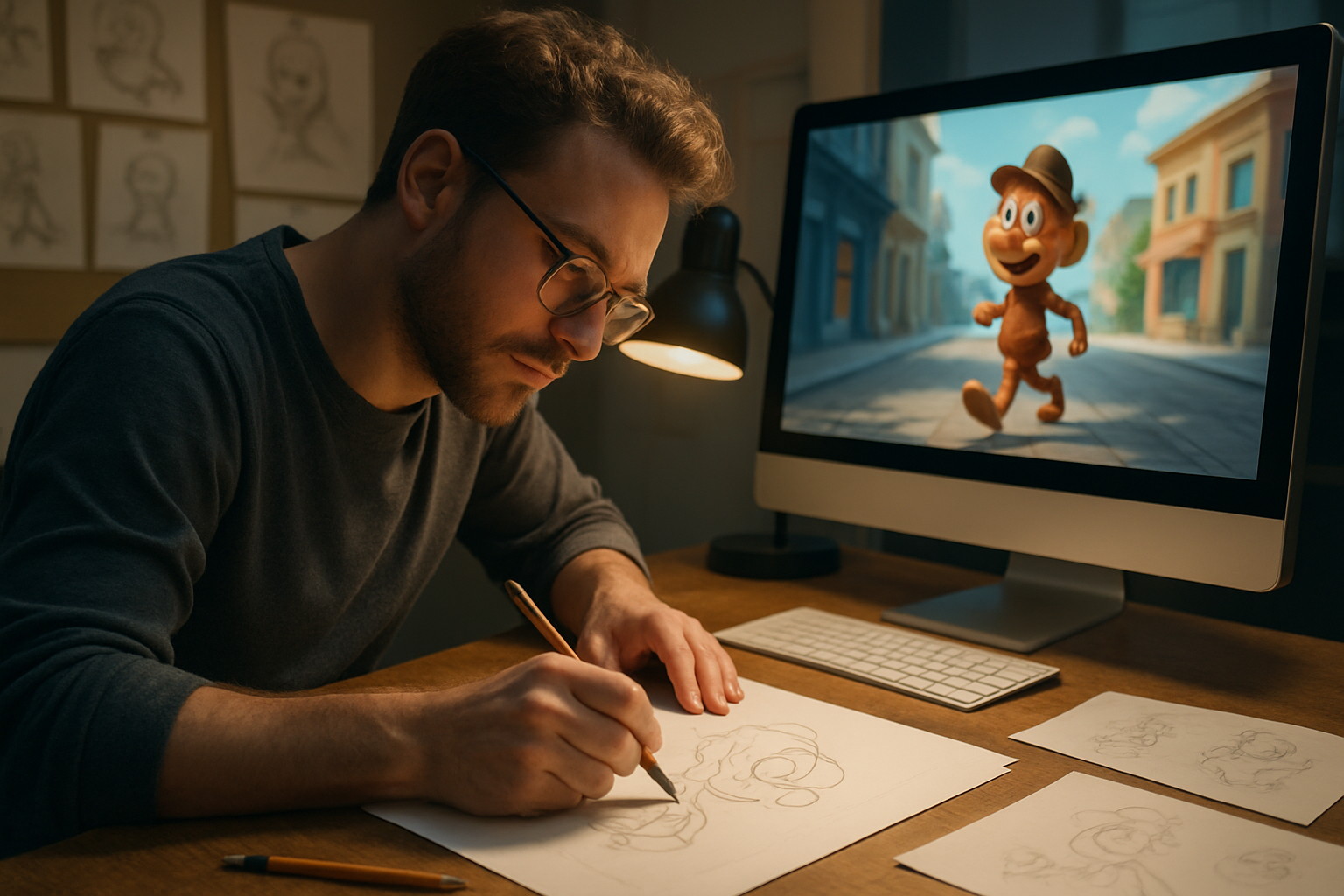Master the Art of Digital Storytelling with a 3D Animation Degree
In today's digital age, the demand for skilled 3D animators continues to grow across various industries, from entertainment to advertising and beyond. A 3D animation degree offers aspiring artists the opportunity to hone their craft and develop the technical skills necessary to bring imaginative worlds to life. This comprehensive program equips students with the tools to master digital storytelling, blending creativity with cutting-edge technology.

What is a 3D Animation Degree and Why Is It Important?
A 3D animation degree is a specialized educational program that focuses on teaching students the art and technology of creating three-dimensional animated content. This degree is crucial in today’s digital landscape as it prepares graduates for careers in film, television, video games, and interactive media. The importance of this degree lies in its ability to bridge the gap between artistic vision and technical execution, providing students with a well-rounded skill set that is highly valued in the industry.
What Core Skills Will You Learn in a 3D Animation Program?
In a 3D animation program, students develop a diverse range of skills essential for success in the field. These include:
-
3D modeling and sculpting
-
Texture mapping and material creation
-
Rigging and character setup
-
Keyframe animation and motion capture techniques
-
Rendering and compositing
-
Storytelling and visual narrative
By mastering these core skills, students become versatile artists capable of bringing complex ideas to life through digital animation.
How Does Texture Mapping and Material Creation Enhance 3D Animation?
Texture mapping and material creation are fundamental aspects of 3D animation that bring depth and realism to digital creations. This process involves applying 2D images or patterns to 3D models, giving them realistic surface properties such as color, texture, and reflectivity. By mastering these techniques, animators can create lifelike characters, environments, and objects that captivate audiences and enhance the overall visual storytelling experience.
What’s the Difference Between Keyframe Animation and Motion Capture?
Keyframe animation and motion capture are two distinct approaches to creating animated movement in 3D environments. Keyframe animation involves manually creating key poses at specific points in time and allowing the software to interpolate the movement between these poses. This method offers precise control over every aspect of the animation but can be time-consuming.
Motion capture, on the other hand, involves recording the movements of real actors or objects and translating that data into digital animation. This technique provides natural, fluid motion but may require additional refinement to achieve stylized or exaggerated movements. Understanding both methods allows animators to choose the most appropriate technique for each project.
Why is Rigging and Character Setup Crucial in 3D Animation?
Rigging and character setup form the backbone of character animation in 3D. This process involves creating a digital skeleton (rig) for a 3D model and defining how it moves. A well-designed rig allows animators to manipulate characters efficiently, controlling their movements, expressions, and interactions within the digital environment. Mastering rigging and character setup is essential for creating believable, expressive characters that can perform a wide range of actions and convey emotions effectively.
What Career Opportunities Await Graduates of 3D Animation Programs?
Graduates of 3D animation programs can pursue a variety of exciting career paths in the creative industries. Some potential roles include:
-
3D Character Animator
-
Visual Effects Artist
-
Game Designer
-
Architectural Visualizer
-
Medical Animator
-
Product Designer
The skills acquired through a 3D animation degree are highly transferable, allowing graduates to adapt to emerging technologies and explore innovative applications of their expertise in fields such as virtual reality, augmented reality, and interactive installations.
| Career Path | Industry | Average Entry-Level Salary (USD) | Growth Potential |
|---|---|---|---|
| 3D Animator | Film/TV | $56,000 | High |
| VFX Artist | Gaming | $61,000 | Moderate |
| Motion Designer | Advertising | $52,000 | Moderate |
| Architectural Visualizer | Architecture | $58,000 | Moderate |
Prices, rates, or cost estimates mentioned in this article are based on the latest available information but may change over time. Independent research is advised before making financial decisions.
A 3D animation degree provides a solid foundation for those looking to embark on a career in digital storytelling. By combining artistic creativity with technical proficiency, graduates are well-equipped to tackle the challenges of bringing imaginative concepts to life in the ever-evolving world of digital media. Whether creating the next blockbuster animated film, designing immersive video game experiences, or pushing the boundaries of virtual reality, a 3D animation degree opens doors to a world of creative possibilities.




